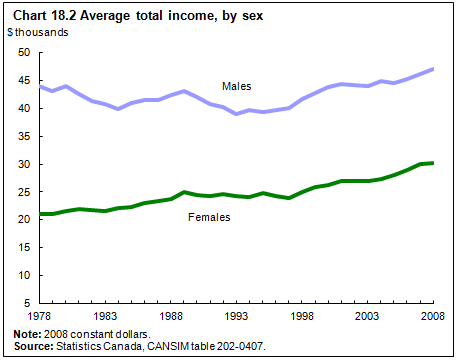Women's incomes
Archived Content
Information identified as archived is provided for reference, research or recordkeeping purposes. It is not subject to the Government of Canada Web Standards and has not been altered or updated since it was archived. Please "contact us" to request a format other than those available.
Related information
Canadian men continue to earn more than women, but women's incomes rose faster than men's over the past decade. In 2008, women had an average total income of $30,100, compared with $47,000 for men. Women's average income rose 14.4% from $26,300 in 2000, compared with a growth rate of 7.3% for men.
One reason for the difference is that women are less likely than men to work full time. Income comes from employment, government transfers, investments, private retirement income and other sources.
In 2008, women in Alberta ($34,000) and Ontario ($31,600) had the highest average total income, while women in New Brunswick ($24,600) and Newfoundland and Labrador ($24,000) had the lowest. Female lone-parent families had the lowest average total income of all family types in 2008, at $42,300, which was 70% of the $60,400 earned by male lone-parent families. Unattached women aged 16 to 64 had an average income of $35,000, 17% less than the $42,100 average income earned by their male counterparts.
- Date modified:

